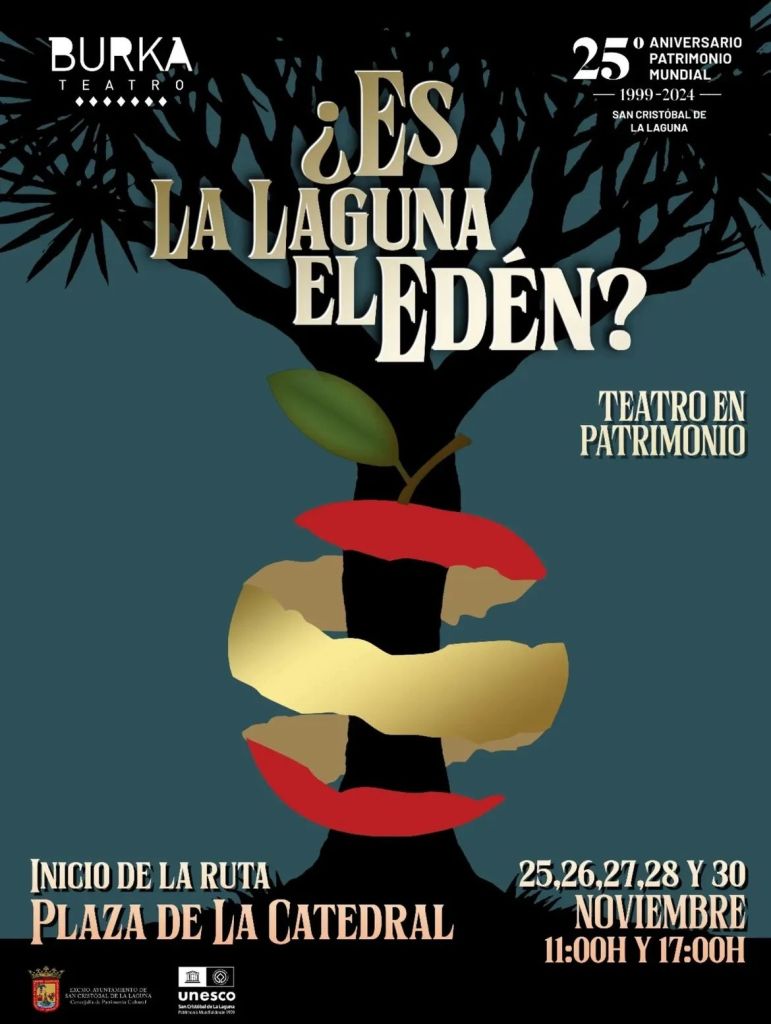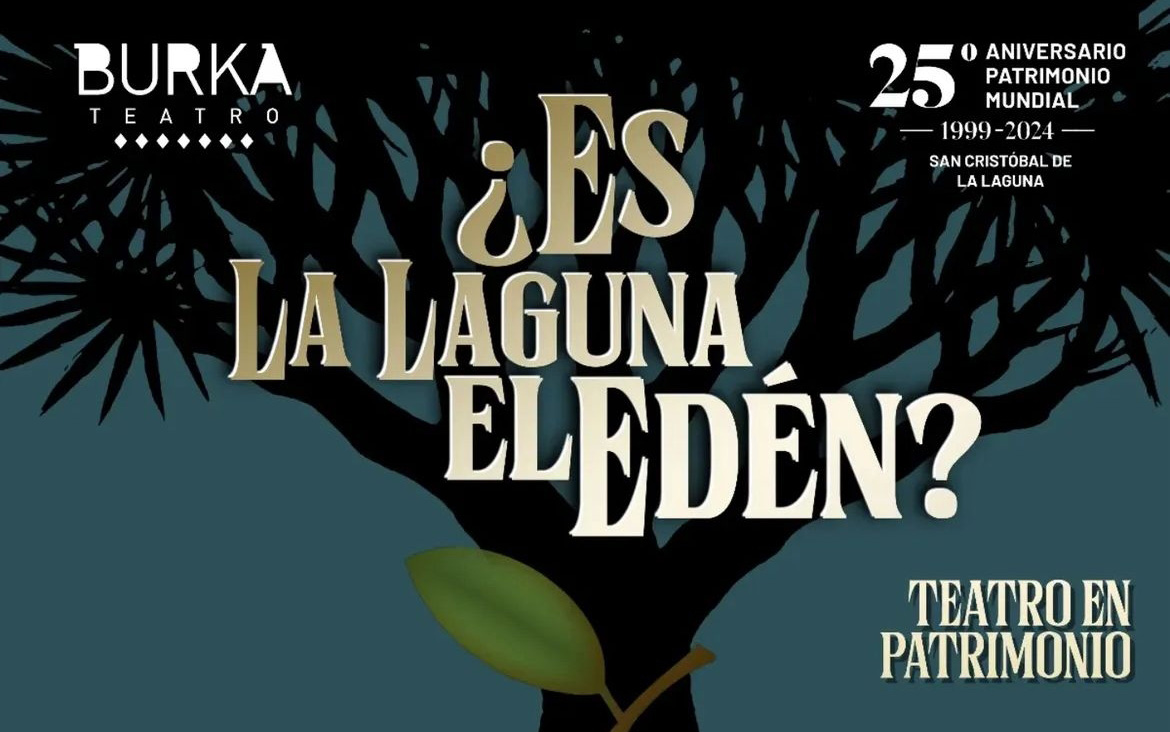The initiative combines comedy, dance and historical dissemination with visits to the cathedral and other emblematic sites in the city, which is celebrating its 25th anniversary as a World Heritage Site
The Department of Cultural Heritage of the City Council of La Laguna, Burka Teatro and historian and populariser Néstor Verona are launching this Tuesday the dramatised tours “Is La Laguna the Garden of Eden?”, a comedy show that, for the first time, will tour the streets and monumental buildings of the city and include a visit to the altarpiece of Los Remedios and the flamenco paintings of Mazuelos, one of the jewels of the city’s movable heritage, located in the Cathedral.

These routes, initially planned to take place in urban areas, had to be adapted in the summer of 2021 to the cloister of the former convent of Santo Domingo, with limited capacity and health protocols due to the pandemic. Now, as part of the 25th anniversary of La Laguna’s declaration as a World Heritage City, they are returning to their original format and offering the public a historical experience in the heart of the city.
Set in the late 16th century, the play suggests that the mythical tree of golden apples described in classical mythology was located in La Laguna and that these apples could grant immortality to King Philip II. With dance, music and humour, the piece invites you to discover emblematic corners of the city, such as La Laguna Cathedral, the Museum of History and Anthropology of Tenerife (Lercaro Palace), Salazar Palace, San Agustín Street and the current Plaza de la Junta Suprema.
The Councillor for Cultural Heritage, Adolfo Cordobés, explains that “dramatised tours have proven to be an effective tool for promoting La Laguna’s heritage. It is not just a matter of contemplating the spaces, but of experiencing them through characters, stories and scenes that recreate the memory of our city, offering the public an immersive and exciting experience”.
In this regard, the councillor emphasises that “theatricalisation brings dynamism and puts us in line with international trends that favour participatory experiences in the interpretation of heritage. In the context of the 25th anniversary, these routes take on special significance and become a living tribute to our history and the recognition granted by UNESCO, because they creatively highlight the universal values that justified this inscription, while helping to project the image of a city that not only preserves its heritage, but also interprets and shares it.”
The director of Burka Teatro, Nacho Almenar, points out that the initiative seeks to “recapture the festive and participatory spirit of these theatrical routes, which were created to tour the streets of the city and which are now, at last, returning to their natural setting. It is a comedy that blends history and myth, inviting the audience to laugh, get excited and discover our heritage from a different perspective. We are proud to contribute to this anniversary with a show that combines theatre, dance and music in such emblematic spaces.”
For his part, Néstor Verona highlights the important historical and artistic background of the work. “The action takes place in 1592, when Philip II is about to die and Doña Mencía de Mendoza arrives in the Canary Islands in search of the golden apples. This myth is linked to the Greek tradition of the apples of the Hesperides, a symbol of immortality and power, which some chroniclers placed in the Atlantic. The play plays with this idea to show how the city, at the height of its boom at the end of the 16th century, became the scene of intrigues, illusions and stories that, even today, form part of our cultural memory.”
The historian also points out that these routes will include access to the cathedral to explain the importance of the Remedios altarpiece and the Flemish panels by Mazuelos, one of the jewels of La Laguna’s movable heritage.
The altarpiece contains a set of seven panels attributed to Hendrick van Balen, master of Anton van Dyck, depicting different scenes from the lives of Jesus and the Virgin Mary. According to the hypothesis of Matías Díaz Padrón, curator of Flemish painting at the Prado Museum, these panels belonged to the old Mazuelos altarpiece, commissioned from Flanders by Pedro Alfonso Mazuelos in 1597. This is why the altarpiece of Nuestra Señora de los Remedios is sometimes referred to as the ‘Mazuelos altarpiece’, even though it does not correspond to it,” adds Verona.
The tours will take place between Tuesday 25th and Sunday 30th November, with two daily showings (11am and 5pm) and the meeting point at the Cathedral square. There will be no tour on Saturday, coinciding with the celebration of La Noche en Blanco (White Night).



